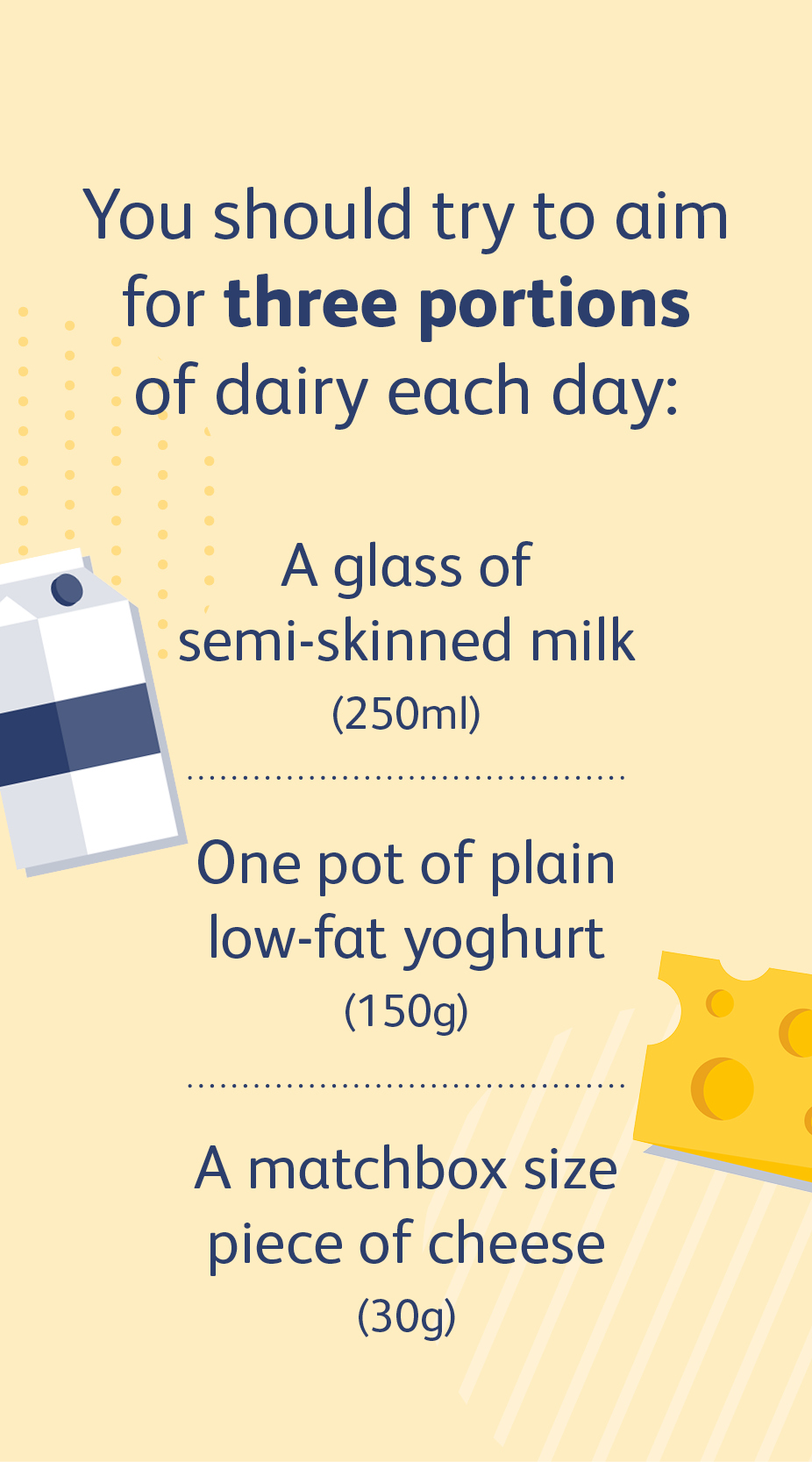Dairy and dairy alternatives
Reviewed by our clinical team
Dairy products such as milk, yoghurt and cheese are great sources of protein, calcium and a wide range of vitamins and minerals.
In this guide we'll look at why we need dairy, some dairy alternatives you could consider and how to get dairy into your diet.
Why do we need dairy?
Dairy products typically provide almost one third of our recommended calcium intake, but the nutrition provided by dairy products goes way beyond calcium alone.
A single glass of semi-skimmed milk provides protein, phosphorus, potassium, iodine, riboflavin and pantothenic acid and 72% of our daily needs for vitamin B12.
Eating the right amount of dairy has been associated with lower blood pressure and a reduced risk of cardiovascular disease and type 2 diabetes.
How much dairy should I eat?

You should try to aim for three portions of dairy each day. Examples of one portion of diary are:
- A glass of semi-skimmed milk (250ml)
- One pot of plain low-fat yoghurt (150g)
- A matchbox size piece of cheese (30g)
Is dairy high in fat?
The fat content of dairy products varies a lot. It's best to choose low-fat and low-sugar versions of dairy as the high-fat varieties with added sugar can be harmful to your health.
It's important to check the labels when purchasing dairy to look out for saturated fat, and sugar content.
What if I can't eat dairy?
If you don't or can't consume dairy products, it's good to include dairy alternatives like soya, rice, almond and oat milk and dairy-free yoghurts in your diet. Try and choose unsweetened, calcium and vitamin B12 fortified versions of dairy alternatives.
How to include dairy in your diet
If you're wondering how you can include diary or dairy alternatives into your diet, here's our top tips:
- Make hot milky drinks
- Drink smoothies or milkshakes
- Pour milk onto breakfast cereals, make porridge with milk
- Use milk or yoghurt in mashed potato
- Top salads and jacket potatoes with grated cheese
- Use natural yoghurt to replace mayo with egg or tuna
- Add a dollop of yoghurt into soup instead of cream
- Top fruit with yoghurt
- Freeze yoghurt mixed with blended fruit for an alternative to ice-cream
You can find out more about eating a healthy diet with this guide, or visiting our lifestyle advice hub.
References
https://www.bda.uk.com/resource/dairy-benefits.html
https://www.nhs.uk/live-well/eat-well/food-types/milk-and-dairy-nutrition/
https://www.bhf.org.uk/informationsupport/support/healthy-living/healthy-eating/healthy-eating-toolkit/food-portions/dairy-and-alternatives
https://www.nhs.uk/live-well/eat-well/food-guidelines-and-food-labels/how-to-read-food-labels/





